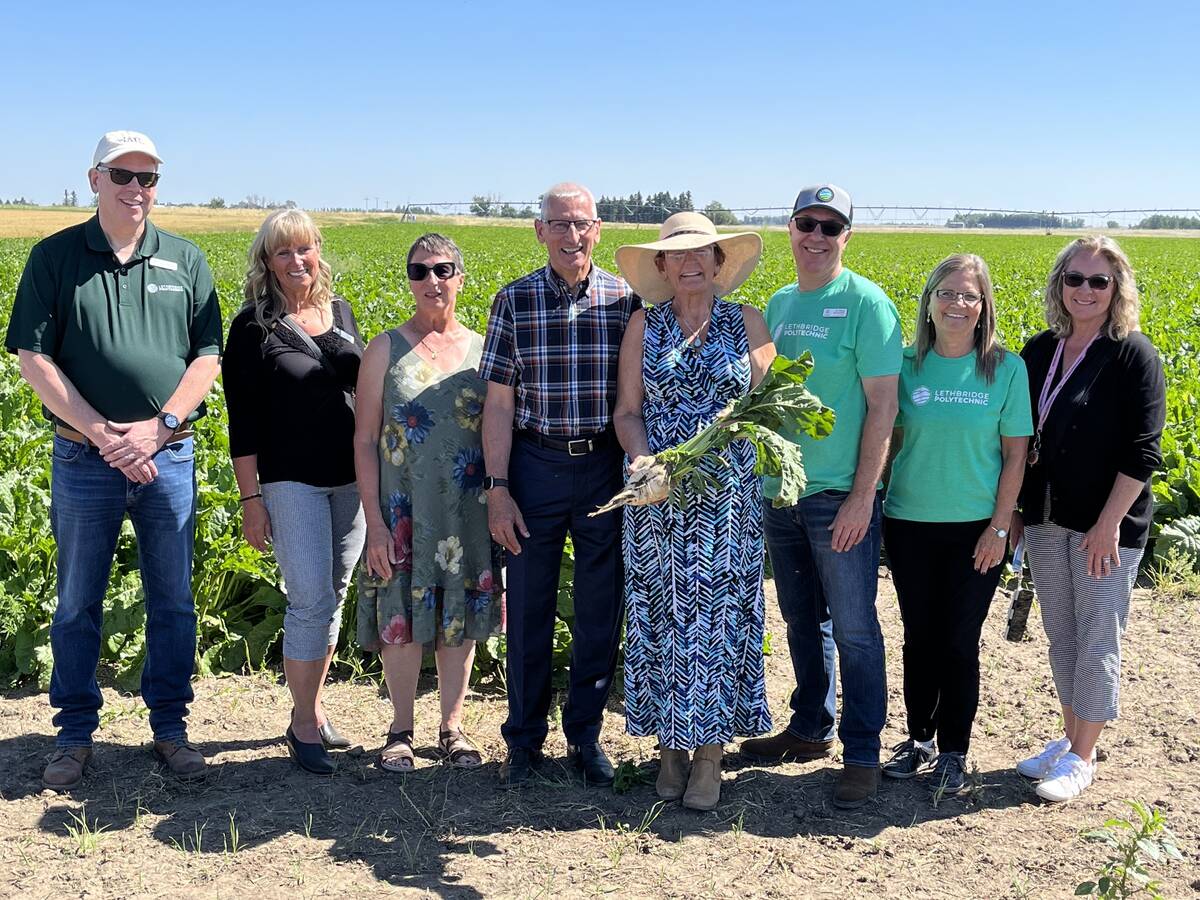Growing a profitable crop on the Prairies can be challenging at the best of times.
But when the weather refuses to cooperate, the task becomes downright complicated.
According to Doug Moisey of the Canola Council of Canada and Alberta provincial oilseed specialist Murray Hartman, producers can take a few key steps to ensure the crop is seeded on time and harvested safely before the frost arrives.
1. Watch historical frost dates and choose seeding dates accordingly When assessing the latest possible date for seeding canola, start by calculating the average date of the first fall frost in the area.
Read Also

Lethbridge Polytechnic receives major donation
Multimillion-dollar donation by Hranac family aids Lethbridge Polytechnic’s research in integrated food production systems, irrigation science and post-harvest technology in Alberta
In most cases, it occurs within two weeks of the first frost date.
Maps showing average first fall frost dates are available online at bit.ly/MB_frost, bit.ly/SK_frost and bit.ly/AB_frost.
2. Select canola varieties that mature more quickly Predicting the days to maturity for any canola variety can be difficult because each growing season is different.
On average, most B. napus varieties require 1,200 to 1,400 growing degree days to develop sufficiently from the date of seeding to swathing. Within that range, early season varieties can reach maturity five days to a week earlier than late season varieties, said Hartman.
3. Manage trash carefully Take steps to ensure that straw, stubble, chaff and plant residue are spread evenly across the field. Spreading trash evenly with a heavy harrow will promote drying across the entire field and will allow soil to warm evenly. An extra trip over the field next spring should help the crop get a good, even start.
4. Check soil temperatures frequently According to Moisey, the benefits of seeding early into a cold seed bed are negligible. The ideal soil temperature to ensure proper canola germination is 10 C.
Farmers with lots of acres to cover can get a jump on the season by monitoring soil temperatures.
The council recommends testing soil temperatures twice a day, at 8 a.m. and 4 p.m., at a depth of one inch.
When morning and afternoon temperatures average at least 5 C for three days in a row, seeding should be safe and germination should occur within a reasonable time.
5.hoose seeding depth carefully Canola that is scratched in at a depth of half an inch will emerge three to four days faster than canola that’s seeded at an inch or deeper.
“If you’re not going to be hunting for moisture, then there’s no reason to seed it deep,” said Hartman.
6. Slow down By reducing seeding speed slightly, canola seeds are less likely to be buried deep in a soil zone that is colder, wetter and less hospitable. Seeding shallow and evenly will result in a crop that emerges more quickly and is less prone to disease.
7. Increase seeding rate Producers who use a slightly higher seeding rate are more likely to produce stands with higher plant densities.
Plant density is an important consideration because canola plants will branch out aggressively if densities fall below five plants per sq. foot. The more a canola plant branches, the slower it is to mature.
According to Moisey, canola producers should aim for plant densities of roughly 10 plants per sq. foot. In most cases, a range of five to 15 plants per sq. foot is still acceptable and should not affect maturity significantly.
“Stands that were lighter, in that two, three and four plants per sq. foot range, were consistently a week to 10 days behind stuff that was in the seven to eight plants per sq. foot range,” said Moisey.
“In general, 10 seems to be quite a comfortable number for everybody.”
8. Apply phosphate with seed The immediate availability of phosphorus will hasten plant growth and should help plants reach maturity a day or two faster than crops that receive a phosphorus top up after emergence.
Depending on soil moisture, producers should consider a top-up application of five to 15 lb. per acre.
“Get some starter phosphate on with that seed,” said Moisey. “That will help.”
9. Follow a good fertility program Crops that have access to ample supplies of nitrogen will remain vegetative longer, while crops that have access to less nitrogen will reach maturity more quickly.
However, according to Moisey, reducing nitrogen rates is a risky strategy.
“The problem (with reducing nitrogen) is that yield losses and quality losses will far outweigh what you save in nitrogen and what you gain in speeding up maturity,” said Moisey.
“Supply adequate nutrition to meet your target yield because when you start playing games with fertility, you start playing with fire.”
10. Consider seed vigour and seed weights Not all seed lots are created equal. Test for seed vigour and pay attention to 1,000 seed weights.
Seed lots with higher 1,000 seed weights will generally offer greater seedling vigour.
Producers with larger seeded lots should also avoid the temptation to reduce seeding rates. If anything, seeding rates for larger seeded seed lots should be increased slightly to ensure optimal plant densities.
Research conducted by Agriculture Canada suggests that open pollinated seed lots with 1,000 seed weights of 2.8 grams or more rated the best seed vigour, as did hybrid seed lots with 1,000 seed weights of 4.5 grams or more.
Moisey also said timely weed control and protection against flea beetles will ensure that seedlings get a good start and aren’t exposed to unnecessary stress or setbacks.
“In the end, it’s all boils down to good sound agronomics,” said Moisey.

















